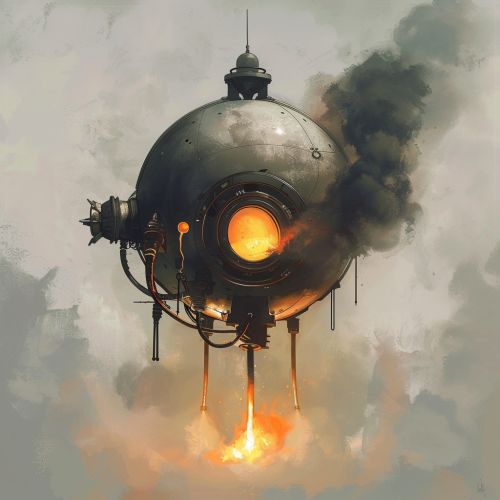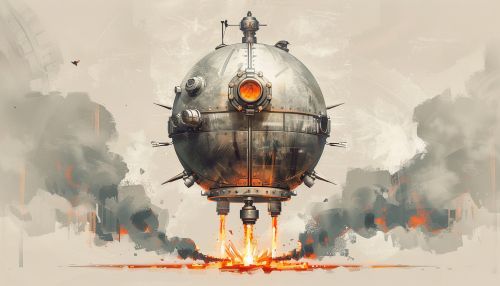Hero's engine
Introduction
The Hero's engine, also known as an aeolipile, is an ancient steam-powered device that demonstrates the principles of propulsion and thermodynamics. It is often considered one of the earliest examples of a steam engine. The invention is attributed to Hero of Alexandria, a Greek engineer and mathematician who lived in the first century AD. The Hero's engine operates on the principle of converting steam pressure into rotational motion, providing a foundational understanding of steam propulsion mechanisms.
Historical Context
Hero of Alexandria documented the aeolipile in his work "Pneumatica," which described various devices powered by air, steam, and water. The aeolipile itself was not used for practical purposes but served as a demonstration of the potential of steam power. This invention predates the industrial revolution by over a millennium, showcasing the advanced understanding of mechanical principles in ancient civilizations.
Design and Construction
The Hero's engine consists of a spherical vessel mounted on a pair of hollow tubes, which serve as both the support and the steam conduits. The vessel is filled with water and heated from below, typically using an open flame. As the water boils, steam is generated and expelled through nozzles positioned tangentially on the sphere's surface. The expulsion of steam creates a reactive force that causes the sphere to rotate.


Materials
The original aeolipile was likely constructed from bronze or another metal capable of withstanding high temperatures. Modern recreations often use materials such as stainless steel or aluminum for improved durability and heat resistance.
Nozzle Design
The efficiency of the Hero's engine is significantly influenced by the design of its nozzles. The nozzles must be positioned tangentially to the sphere's surface to maximize rotational force. The diameter and length of the nozzles also affect the steam's velocity and the resulting thrust.
Principles of Operation
The Hero's engine operates based on Newton's third law of motion: for every action, there is an equal and opposite reaction. As steam is expelled from the nozzles, it generates a reactive force that propels the sphere in the opposite direction. This principle is fundamental to understanding propulsion systems, including modern jet engines and rockets.
Thermodynamics
The operation of the Hero's engine can be analyzed using the principles of thermodynamics. The conversion of water into steam involves the absorption of heat energy, which increases the kinetic energy of the water molecules. When the steam is expelled, this kinetic energy is converted into mechanical energy, causing the sphere to rotate.
Fluid Dynamics
The behavior of steam as it exits the nozzles can be described using fluid dynamics. The steam's velocity and pressure are governed by the principles of conservation of mass and energy. The design of the nozzles plays a crucial role in determining the efficiency of steam expulsion and the resulting thrust.
Applications and Legacy
While the Hero's engine itself was not used for practical applications in ancient times, it laid the groundwork for future developments in steam power. The principles demonstrated by the aeolipile were later applied to more complex steam engines, which played a pivotal role in the Industrial Revolution.
Educational Tool
Today, the Hero's engine is often used as an educational tool to demonstrate basic principles of physics and engineering. It provides a tangible example of steam propulsion and the conversion of thermal energy into mechanical work.
Influence on Modern Engineering
The concepts illustrated by the Hero's engine have influenced modern engineering in various ways. The understanding of steam propulsion has been applied to the development of steam turbines, jet engines, and rocket propulsion systems. The aeolipile serves as a historical precursor to these advanced technologies.
